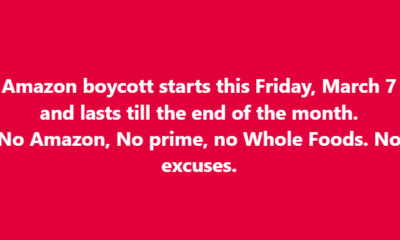How to Make Money on Amazon: Exploring Legit Options in 2024
While Amazon might not just hand out free cash, there are several legitimate ways to earn income through its platform. Whether you’re a creative entrepreneur or a tech-savvy marketer, here are some options to consider:
Selling on Amazon:
- Private Label: Create your own brand and sell unique products. Requires research, investment, and marketing skills. Platforms like Jungle Scout can help with product research.
- Retail Arbitrage: Buy discounted items in stores and resell them on Amazon for a profit. Requires keen eye for deals and understanding of Amazon’s policies.
- Wholesale: Source products in bulk from manufacturers and sell them on Amazon. Requires larger upfront investment and inventory management.
- Handmade: Sell your handcrafted goods through Amazon Handmade. Great for artisans and crafters with unique products.
Content Creation & Marketing:
- Amazon Associates: Promote Amazon products on your website, blog, or social media and earn referral fees for each sale. Requires building an audience and driving traffic.
- Kindle Direct Publishing: Self-publish your ebooks and earn royalties through Amazon’s vast marketplace. Requires writing and editing skills, along with effective book marketing.
- Amazon Influencer: Earn commissions by promoting products to your engaged audience on social media platforms like Instagram and TikTok. Requires building a large and relevant following.
Other Opportunities:
- Amazon Mechanical Turk (MTurk): Complete small tasks like data entry, surveys, and image labeling for micro-payments. Not a significant income source but can be a side hustle.
- Amazon Flex: Deliver Amazon packages in your spare time as an independent contractor. Flexible schedule but pay depends on deliveries completed.
- Amazon Vine: Review products for free in exchange for honest feedback. Not a direct income source but can help build trust with potential customers for your own brand.
Important Considerations:
- Research: Each method has its own requirements, risks, and potential rewards. Research thoroughly before investing time or money.
- Competition: Amazon is a competitive marketplace. Stand out by offering unique products, high-quality content, or excellent customer service.
- Policies: Always adhere to Amazon’s seller and community guidelines to avoid account suspension.
- Taxes: Consult a tax advisor to understand your tax obligations for income earned through Amazon.
Remember, success on Amazon takes dedication, effort, and often some initial investment. Choose a method that aligns with your skills and interests, and be prepared to put in the work for long-term results.
Making Money with Amazon Associates: A Comprehensive Guide
The Amazon Associates program, also known as Amazon Affiliate Marketing, offers a popular way to earn income by promoting Amazon products on your website, blog, social media, or even in physical stores. Here’s a detailed breakdown of how it works and how you can maximize your earnings:
Getting Started:
- Join the Program: Sign up for free at https://affiliate-program.amazon.com/. You’ll need a website or platform where you can promote products.
- Choose Products: Select products relevant to your audience and niche. Consider factors like commission rates, product quality, and popularity.
- Generate Links: Use the Associates Central to create unique tracking links for each product. When someone clicks your link and makes a qualifying purchase, you earn a commission.
Promotion Strategies:
- Content Creation: Write informative and engaging content like product reviews, comparisons, or gift guides featuring relevant affiliate links.
- Social Media: Share product recommendations, deals, and promotions on your social media platforms with affiliate links.
- Email Marketing: Build an email list and send targeted campaigns featuring curated product selections with affiliate links.
- Video Marketing: Create video content showcasing products, tutorials, or unboxings with affiliate links in the description.
- Influencer Marketing: Partner with relevant influencers in your niche to promote products through their channels using your affiliate links.
Optimizing for Success:
- Traffic is Key: Focus on building an audience and driving traffic to your platform where you have your affiliate links.
- Transparency: Disclose your affiliate relationship clearly to build trust with your audience.
- Target Your Audience: Promote products relevant to their interests and needs for higher click-through rates.
- Track Performance: Use analytics tools to monitor your clicks, conversions, and earnings to identify what’s working and what needs improvement.
- Stay Informed: Keep up-to-date with Amazon’s program policies and best practices to ensure compliance and avoid account suspension.
Additional Tips:
- Utilize Resources: Amazon Associates offers various resources, including product recommendations, marketing tools, and educational materials.
- Join Communities: Connect with other Amazon Associates for support, tips, and collaboration.
- Consider Paid Advertising: Once you have established a strong foundation, consider paid advertising strategies to reach a wider audience and increase traffic.
- Be Patient: Building a successful affiliate business takes time and effort. Be patient, consistent, and keep learning to optimize your results.
Tips to Success from Amazon Affiliatte
Here are some key tips for success as an Amazon Affiliate:
Niche & Audience:
- Find your niche: Choose a specific area of interest with passionate followers. Understanding your audience’s needs and wants is crucial for recommending relevant products.
- Build trust: Be transparent about your affiliate relationships and focus on providing genuine value and informative content.
Content & Promotion:
- Create high-quality content: Publish informative articles, reviews, comparisons, or video content showcasing products related to your niche. SEO optimization helps users find your content.
- Diversify your promotion: Utilize various channels like your website, blog, social media, email marketing, or even in-person interactions (depending on your niche) to reach your audience.
- Utilize social proof: Include customer testimonials, ratings, and case studies to build trust and encourage conversions.
Optimization & Tracking:
- Choose profitable products: Analyze commission rates, product popularity, and conversion potential before promoting. Tools like Jungle Scout can help.
- Optimize your links: Use clear calls to action, strategically place links, and experiment with different formats (text, banners, etc.).
- Track your performance: Utilize analytics tools to monitor clicks, conversions, and earnings to identify areas for improvement. A/B testing different approaches can yield valuable insights.
Additional Tips:
- Stay informed: Keep up-to-date with Amazon’s Associate program policies and best practices to avoid account suspension.
- Engage with your audience: Respond to comments, answer questions, and build relationships with your followers.
- Be patient: Building a successful affiliate business takes time and effort. Consistent content creation, optimization, and audience engagement are key.
- Consider paid advertising: Once you have a solid foundation, consider paid advertising strategies to reach a wider audience and increase traffic.
Bonus Tip: Utilize Amazon resources available to Associates, including product recommendations, marketing tools, and educational materials. Consider joining online communities for support, tips, and collaboration.
Remember, success requires dedication, strategic planning, and consistent content creation. Adapt these tips to your unique approach and leverage the Amazon Associates program to generate a sustainable income stream.
How much you can earn from Amazon Affiliate
Unfortunately, I cannot definitively tell you how much you can earn from Amazon Affiliate Marketing. It depends on a multitude of factors:
1. Your Niche and Content:
- Niche Popularity: A popular niche with high demand for products has more earning potential compared to a niche with fewer potential customers.
- Content Quality: Engaging and informative content that effectively promotes products attracts more clicks and conversions.
- Website/Channel Traffic: The more traffic you drive to your affiliate links, the greater your earning potential.
2. Product Selection and Commission Rates:
- Product Profitability: Products with higher commission rates and purchase prices lead to higher potential earnings per sale.
- Conversion Rates: Choosing products your audience is likely to buy increases your overall earnings.
3. Promotion Strategy and Optimization:
- Marketing Effectiveness: Utilizing effective marketing strategies like SEO, social media promotion, and email marketing drives more traffic and conversions.
- Link Placement and Calls to Action: Clear and strategic placement of affiliate links with strong calls to action leads to higher click-through rates.
- Tracking and Optimization: Monitoring your performance and optimizing your approach based on data insights can significantly improve your earnings.
4. Time and Effort:
Building a successful affiliate business takes time and consistent effort. Don’t expect overnight success.
Instead of focusing on a specific amount, consider aiming for realistic goals aligned with your niche, audience, and effort level.
Here are some examples of income earned by Amazon Affiliates to give you a general idea:
- Low Income: Individuals just starting out or working in low-competition niches might earn $100-$500 per month.
- Average Income: Established affiliates in competitive niches can earn $1,000-$5,000 per month.
- Top Earners: Highly successful affiliates with large audiences and optimized strategies can earn $10,000 or more per month.
Remember, these are just examples, and your individual results may vary significantly. Focus on building a valuable resource for your audience and optimizing your approach for long-term success.
Disclaimer: This information is for educational purposes only and should not be considered financial advice. Always conduct your own research and due diligence before making any financial decisions.
https://www.exaputra.com/2024/02/how-to-make-money-on-amazon-exploring.html
Renewable Energy
ACORE Statement on Treasury’s Safe Harbor Guidance
ACORE Statement on Treasury’s Safe Harbor Guidance
Statement from American Council on Renewable Energy (ACORE) President and CEO Ray Long on Treasury’s Safe Harbor Guidance:
“The American Council on Renewable Energy (ACORE) is deeply concerned that today’s Treasury guidance on the long-standing ‘beginning of construction’ safe harbor significantly undermines its proven effectiveness, is inconsistent with the law, and creates unnecessary uncertainty for renewable energy development in the United States.
“For over a decade, the safe harbor provisions have served as clear, accountable rules of the road – helping to reduce compliance burdens, foster private investment, and ensure taxpayer protections. These guardrails have been integral to delivering affordable, reliable American clean energy while maintaining transparency and adherence to the rule of law. This was recognized in the One Big Beautiful Act, which codified the safe harbor rules, now changed by this action.
“We need to build more power generation now, and that includes renewable energy. The U.S. will need roughly 118 gigawatts (the equivalent of 12 New York Cities) of new power generation in the next four years to prevent price spikes and potential shortages. Only a limited set of technologies – solar, wind, batteries, and some natural gas – can be built at that scale in that timeframe.”
###
ABOUT ACORE
For over 20 years, the American Council on Renewable Energy (ACORE) has been the nation’s leading voice on the issues most essential to clean energy expansion. ACORE unites finance, policy, and technology to accelerate the transition to a clean energy economy. For more information, please visit http://www.acore.org.
Media Contacts:
Stephanie Genco
Senior Vice President, Communications
American Council on Renewable Energy
genco@acore.org
The post ACORE Statement on Treasury’s Safe Harbor Guidance appeared first on ACORE.
https://acore.org/news/acore-statement-on-treasurys-safe-harbor-guidance/
Renewable Energy
Should I Get a Solar Battery Storage System?
Renewable Energy
Wine Grapes and Climate Change
 I just spoke with a guy in the wine industry, and I asked him how, if at all, climate change is affecting what we does.
I just spoke with a guy in the wine industry, and I asked him how, if at all, climate change is affecting what we does.
From his perspective, it’s the horrific wildfires whose smoke imbues (or “taints”) the grapes with an unpleasant flavor that needs to be modified, normally by creative methods of blending.
-
Climate Change2 years ago
Spanish-language misinformation on renewable energy spreads online, report shows
-
Climate Change Videos2 years ago
The toxic gas flares fuelling Nigeria’s climate change – BBC News
-

 Greenhouse Gases1 year ago
Greenhouse Gases1 year ago嘉宾来稿:满足中国增长的用电需求 光伏加储能“比新建煤电更实惠”
-

 Climate Change1 year ago
Climate Change1 year ago嘉宾来稿:满足中国增长的用电需求 光伏加储能“比新建煤电更实惠”
-

 Carbon Footprint1 year ago
Carbon Footprint1 year agoUS SEC’s Climate Disclosure Rules Spur Renewed Interest in Carbon Credits
-
Climate Change2 years ago
Why airlines are perfect targets for anti-greenwashing legal action
-
Renewable Energy2 months ago
US Grid Strain, Possible Allete Sale
-
Climate Change2 years ago
Some firms unaware of England’s new single-use plastic ban




















